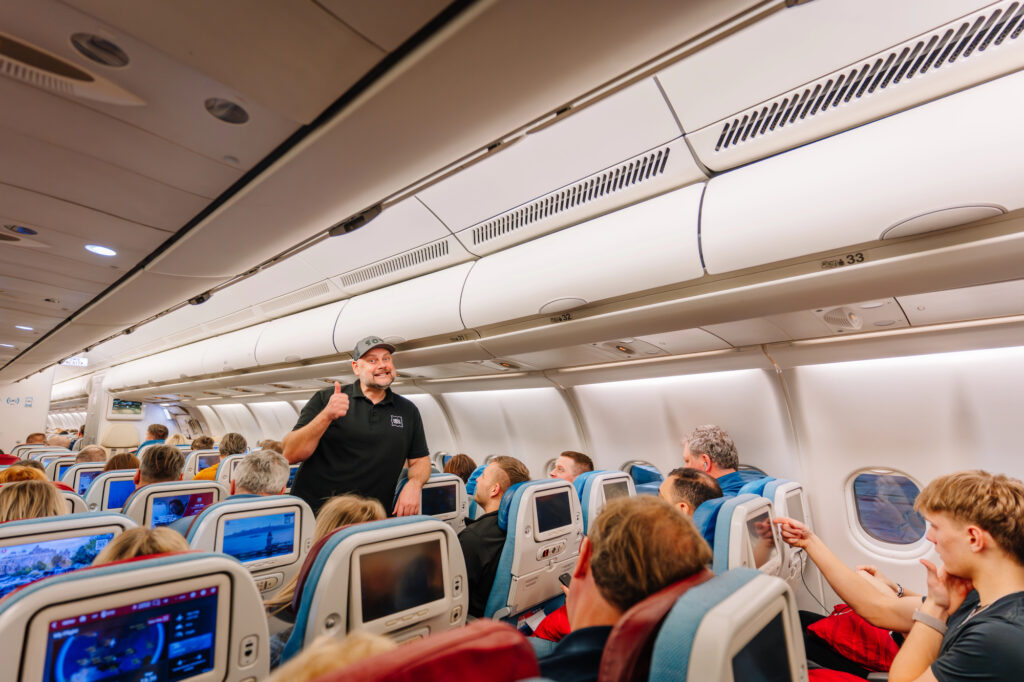5-Star vs. Budget Airlines: What You Get and What You Don’t

Not all flights are created equal. Whether you’re flying with a five-star airline or opting for a no-frills budget carrier, the difference in experience can be night and day. From the legroom to the meals (or lack thereof), what you pay for really does shape your journey. Here’s how premium and budget airlines stack up—so you know exactly what to expect when you book your next ticket.
1. Ticket Price: Pay Less, Get Less

Budget airlines are known for one thing: low fares. These carriers offer the bare minimum to get you from Point A to Point B, often with limited amenities and extra charges for everything from seat selection to carry-on bags. Five-star airlines typically come with a higher base price, but that cost usually includes perks like checked baggage, meals, and entertainment. For travelers seeking value and predictability, the difference in upfront cost often comes down to what you value more—savings or service. If you’re fine traveling light with no extras, budget wins. If you want more included, the five-star experience might actually be more cost-effective in the long run.
2. Seating Comfort: Space vs. Squeeze

One of the most noticeable differences is the seat itself. Five-star airlines tend to offer more legroom, wider seats, and better recline, even in economy class. Budget carriers, on the other hand, maximize space efficiency, which often means tight quarters and limited leg movement. For short-haul flights, this may not be a big deal—but for long-haul or overnight travel, comfort quickly becomes a priority. If stretching out matters to you, premium seating can make a huge difference. Even better, five-star airlines often allow seat upgrades or premium economy options for added comfort.
3. In-Flight Service: Polished vs. Practical

Service is a defining feature of five-star airlines. From friendly flight attendants to thoughtfully plated meals and attention to detail, it’s clear that customer experience is a priority. Budget airlines, while professional, focus on efficiency rather than luxury. Expect minimal interaction, fewer attendants, and paid snacks if you want anything beyond water. While both options get the job done, five-star service can turn a routine flight into a memorable journey. Budget carriers focus on function over form—and that’s perfectly fine if your expectations are set.
4. Food and Drinks: Inclusive vs. Extra Charges

Hungry flyers take note—meals are often the first thing to go on budget carriers. Most will sell snacks, drinks, and meals à la carte, while five-star airlines typically include complimentary meals and beverages, even in economy class. On premium airlines, you’ll often get multi-course meals, special diet options, and complimentary alcohol. Meanwhile, budget airlines may only stock pre-packaged items or charge extra for hot food. If food is important to your in-flight experience, it might be worth paying more upfront for a better culinary offering.
5. Baggage: Included vs. Itemized

Checked baggage is another area where the difference is clear. Many five-star airlines offer at least one free checked bag, while budget carriers often charge for both checked and carry-on luggage. Forgetting to prepay can result in high fees at the airport, sometimes even more than the cost of your ticket. With premium airlines, the rules are more generous and less confusing. If you travel with a lot of gear or souvenirs, it may be cheaper overall to fly with an airline that includes bags in the fare.
6. Entertainment and Extras: Screens vs. Silence

In-flight entertainment is where five-star airlines shine. You can expect personal touchscreens, on-demand movies and TV shows, games, and sometimes even live TV or Wi-Fi. Budget airlines usually skip built-in screens altogether—some may offer rentals or streaming options via your own device, but it’s hit or miss. If you’re someone who relies on entertainment to make the time fly, you’ll likely need to come prepared on budget flights. Bring your own downloaded content, charger, and headphones if going the low-cost route.
7. Airports and Routes: Major Hubs vs. Secondary Airports

Budget airlines often operate out of secondary airports that are farther from city centers. This helps keep costs low, but it can mean added transport time and fees once you land. Five-star airlines typically fly into major airports with better facilities, easier transfers, and more flight options. If convenience matters or you’re connecting to another flight, a premium carrier might save you time and stress. However, for regional or one-way trips, budget airlines can still offer unbeatable value—just check your arrival airport before booking.
8. Delays and Flexibility: Rules vs. Rigid Policies

When it comes to changes, cancellations, or delays, five-star airlines tend to offer more flexibility. They often provide more support, easier rescheduling, and sometimes compensation for disruptions. Budget airlines usually have strict no-refund policies and minimal support in the event of delays. You may also face change fees or lose the full cost of your ticket if plans shift. If you’re traveling on a tight schedule, the added flexibility of a full-service airline could be a game-changer.






